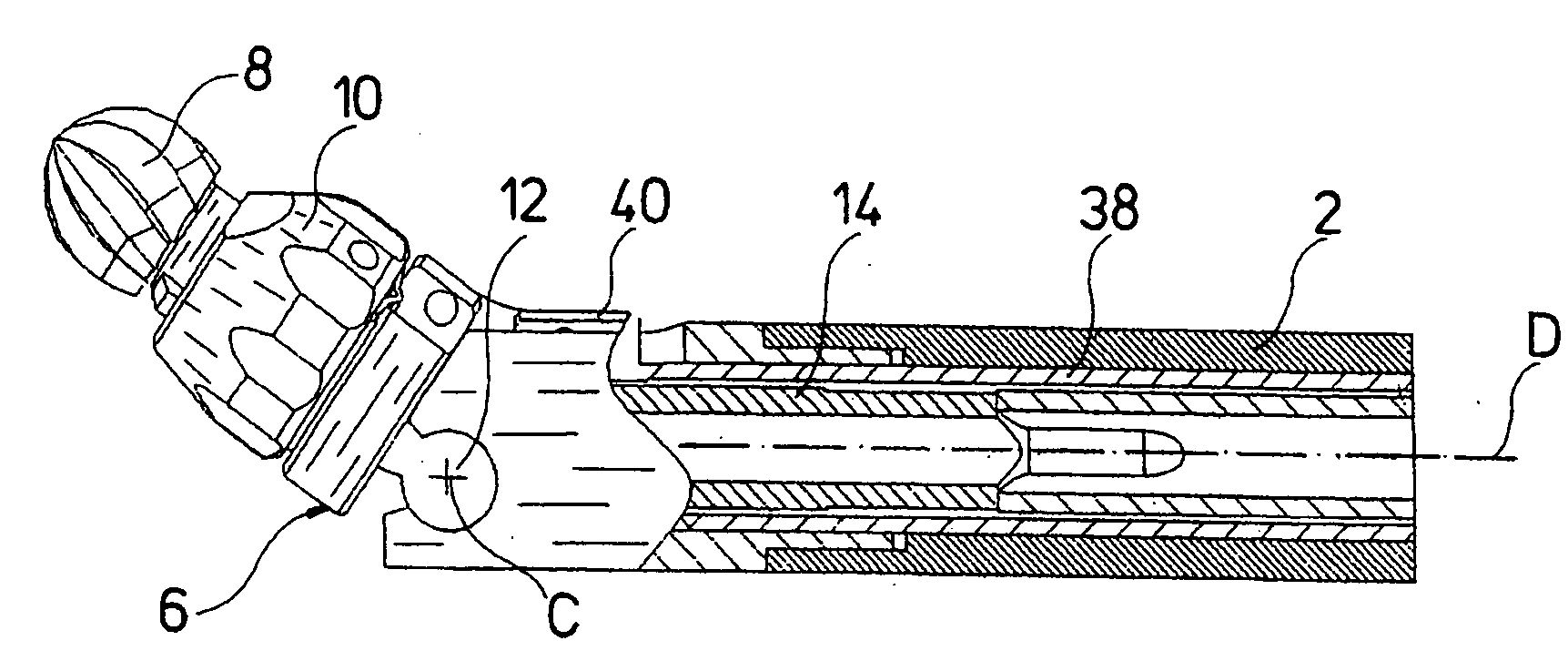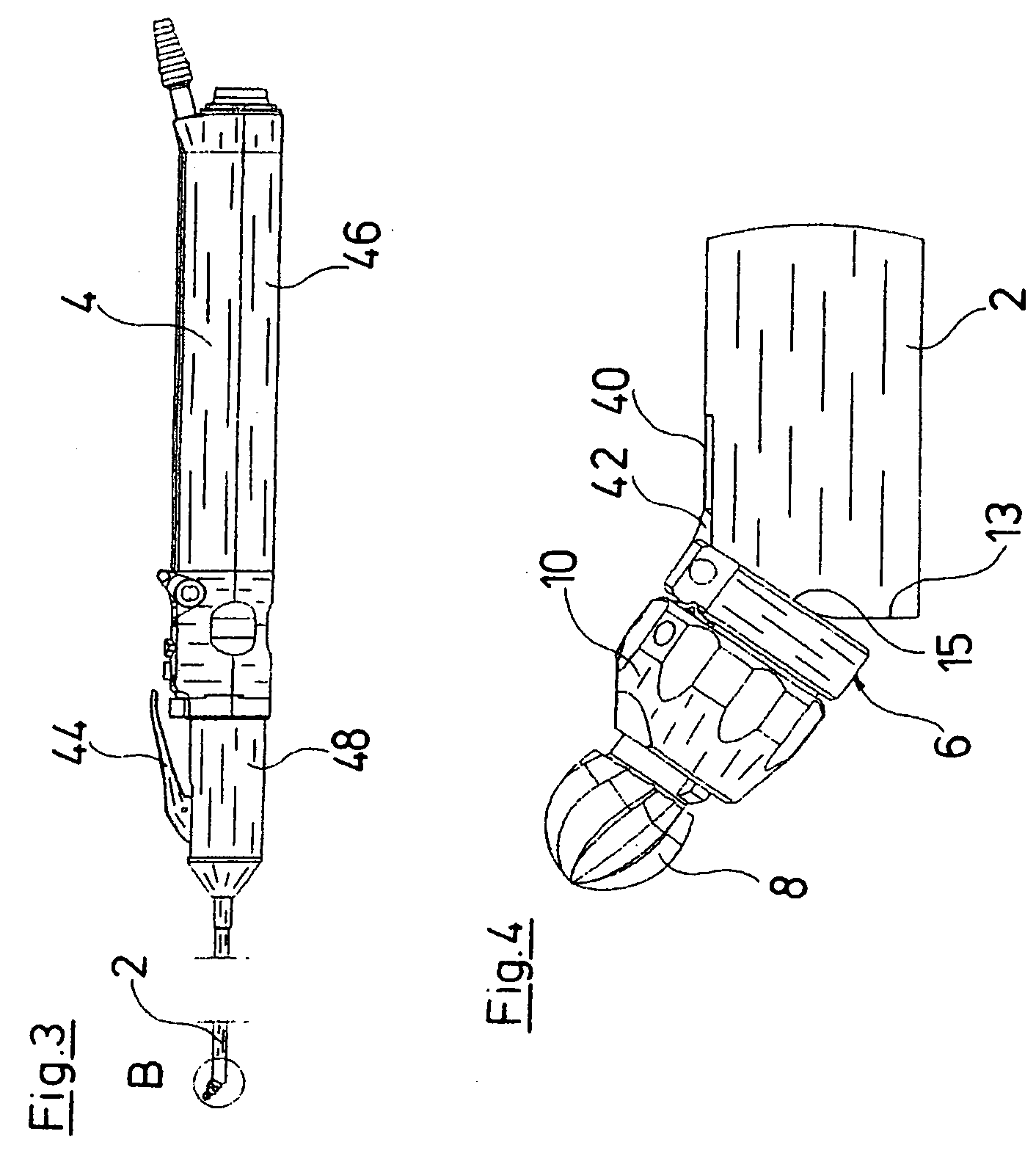Endoscopic Instrument
a technology of endoscopic instruments and hollow shanks, applied in the field of endoscopic instruments, can solve the problems of inconvenient endoscopic application, inconvenient use of endoscopic instruments, and inability to adapt to endoscopic applications
- Summary
- Abstract
- Description
- Claims
- Application Information
AI Technical Summary
Benefits of technology
Problems solved by technology
Method used
Image
Examples
Embodiment Construction
[0027]The endoscopic instrument represented in the figures comprises a rigid hollow shank 2. This hollow shank 2 is arranged on the distal end of a grip part 4. The hollow shank 2 forms the part of the endoscopic instrument via which the working channel of an endoscope, which is not shown, is introduced into the inside of a body. A head part 6 is arranged outside the distal end of the hollow shank 2, and a tool in the form of a miller head 8 is mounted in this head part. The head part 6 at its distal end comprises a closure element 10 with which the miller head 8 may be releasably fastened in the head part 6. For this, a clamping device is provided in the closure element 10, with which device the miller head 8 may be firmly clamped with a non-positive fit.
[0028]The head part 6 is pivotably mounted about an axis C on a joint 12 at the distal end of the hollow shank 2 (see FIG. 7). The axis C extends normally to a longitudinal axis D of the hollow shank 2. The pivotability of the head...
PUM
 Login to View More
Login to View More Abstract
Description
Claims
Application Information
 Login to View More
Login to View More - R&D
- Intellectual Property
- Life Sciences
- Materials
- Tech Scout
- Unparalleled Data Quality
- Higher Quality Content
- 60% Fewer Hallucinations
Browse by: Latest US Patents, China's latest patents, Technical Efficacy Thesaurus, Application Domain, Technology Topic, Popular Technical Reports.
© 2025 PatSnap. All rights reserved.Legal|Privacy policy|Modern Slavery Act Transparency Statement|Sitemap|About US| Contact US: help@patsnap.com



